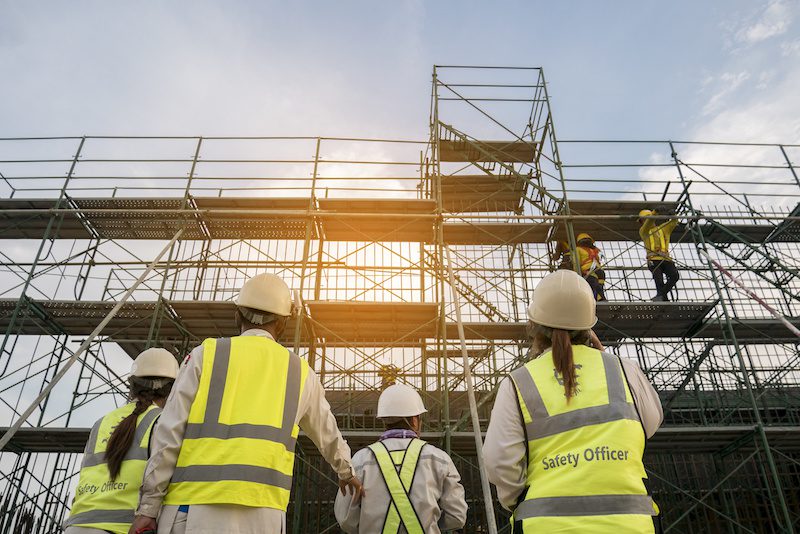In a dangerous event at a WA site in June 2018, a scaffolder fell four metres after he became imbalanced when his fall arrest equipment (inertia reel lanyard) locked. The incident was further complicated by the fact that scaffolder had attached to a handrail as an anchorage and the lanyard webbing sheared below the energy absorber. Fortunately, he survived the incident with a damaged shoulder.
The incident highlights the need to identify effective anchorage points and the need to use effective planned accessways when undertaking tasks at height.
The DMIRS said that “in June 2018, a scaffolder fell while crossing a void 5.7 metres above the ground. The scaffolder was wearing a fall arrest harness with a retractable type lanyard connected to a horizontal guardrail of a scaffold platform. When stepping 1.3 metres laterally to access a pipe support structure, the inertia reel mechanism of the lanyard engaged, impacting the scaffolder’s balance. This caused the scaffolder to fall back through the void and swing against the scaffold structure. The webbing on the retractable lanyard then sheared below the shock (energy) absorber component. The scaffolder fell approximately four metres, landing on a staircase and dislocating his shoulder.”
The regulator stated that the direct cause of the incident was that the ‘scaffolder lost his balance while crossing avoid’ and that ‘the lanyard failed before deploying the shock absorber’
READ RELATED CONTENT
- Software sensors and safety add ons | The cost of remaining safe
- Infrared camera designed for the mining industry
- Load skates warning from regulator
It said a number of issues also contributed to the incident including those of:
- Higher level risk mitigation measures (e.g a stairway) were not in use.
- The fall arrest equipment was not used in a way to reduce, so far as is practicable, the possibility of injury to the user.
- The anchor point selection was incorrect for the application and outside the maximum of 30°offset recommended in AS/NZS 1891.4:2009, Part 5.1.2.
- The lanyard integrity was compromised at the connection between the inertia reel and the shock absorber with the webbing material worn and/or damaged.
- The scaffolder’s lateral swing (the pendulum effect) extended the fall distance, likely exceeding free fall limits, before the lanyard took up the load.
The Department recommends:
- Identifying if there are alternative and safer methods of conducting the task.
- Identifying the hazards, assess and control all risks that may arise for all activities involving the use of fall arrest equipment.
- Confirming workers conducting work at heights with fall arrest equipment are adequately instructed, trained, assessed and supervised
- Using fall arrest equipment in accordance with AS/NZS 1891.4:2009 and the manufacturer’s recommendations, including a total fall distance calculation to ensure a residual safety clearance is maintained.
- Ensuring all servicing, testing, maintenance and storage of fall arrest equipment is conducted in accordance with applicable standards and manufacturers recommendations.
- Protecting fall arrest equipment from degradation due to adverse exposure to ultra violet radiation or chemicals.
- Increasing inspection frequency when fall arrest equipment is used in harsh conditions, such as abrasive or corrosive environments.
- Ensuring all persons using fall arrest equipment are competent to inspect and use this equipment, and do so prior to and after each use.
- Discarding and replacing all damaged and/or deteriorated equipment
More information is available on the DMIRS website















Add Comment